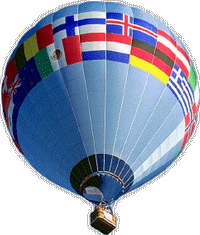 by Flemming Funch by Flemming Funch
From Tom Munnecke:to quote Freeman Dyson: "To help the poor from "the top down" is least likely to succeed. But science and technology are concentrated at the top, making top down the method of choice for those in power. The challenge, he said, is to find ways to help people by providing science and technology from "the bottom up." Â…Three successful "bottom up" approaches described by Dyson share an important trait: As they succeeded, they spread quickly. Dyson calls this 'autocatalysis' -- a chemistry term meaning that as a chemical reaction proceeds, it automatically accelerates. When, for example, British farmers in the 1950s began using drying sheds to keep their harvests dry, the technology spread rapidly. "As soon as the sheds were shown to be effective, every farmer had to have one," Autocatalysis is a "key virtue to look for in any technology that claims to improve human welfare on a large scale," he added."
He introduces two profound questions:
1. How do we improve human welfare on a global scale?
2. What energy could 'automatically accelerate' to fuel this improvement?
It seems to me that we can address #1 above by applying our knowledge of scale free networks to create a cascade of uplift. To do so, however, we need to figure out how to talk about uplift. One way to do this is to create an Uplift Pattern Language (UPL) which allows us to talk about patterns of uplift. This is modelled after Christopher Alexander's work on architectural patterns which has been adopted in the software community for software Pattern Languages. The Jini Community Pattern Language is an example of this applied to a community. The Uplift Pattern Language would define patterns of uplift and their contexts, within a benegnostic framework.
One application of the UPL would be to create Virtue Viruses, which would be self-propagating, self-organizing activities/messages/events which would exploit the most powerful uplift patterns. Seligman's work on Values in Action provides some fuel for thinking about this. This also relates to Hirshmann's "Finding where Virtue is afoot" quoted by David Ellerman.
|
|
 by Flemming Funch
by Flemming Funch